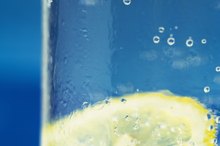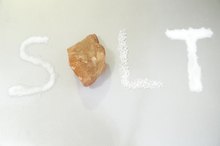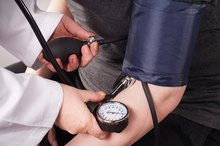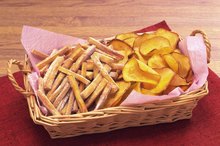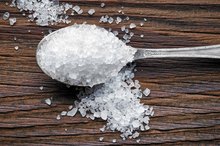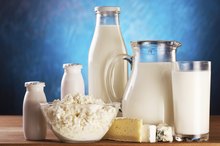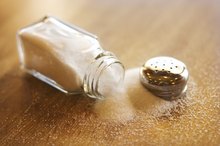How to Lower Sodium Levels in the Blood Naturally
Your body needs sodium, but high sodium levels in the blood can cause high blood pressure, heart disease and kidney damage. According to the Harvard School of Public Health, Americans consume at least 1-1/2 tsp. of salt each day. This is about twice the amount you should consume if you have high blood pressure. In addition, you may not be consuming certain foods that help balance electrolytes. When affected by the offset of sodium levels in your blood, you need to follow a sodium-reduction plan.
Consume potassium-rich foods. Potassium helps balance sodium levels. Colorado State University Extension recommends following the Dietary Approaches to Stop Hypertension, or DASH, diet. It consists of low-sodium, low-fat foods that are rich in potassium, magnesium and calcium. The diet should consist of no more than 1,500 mg of sodium each day. Consume raw fruit, meat, milk, and green, leafy vegetables for your potassium needs.
How to Neutralize Salt Intake
Learn More
Eliminate processed foods to reduce sodium levels. Processed foods contain high amounts of sodium for preserving food to keep it fresh longer. According to the Centers for Disease Control and Prevention, processed foods contribute up to 75 percent of sodium in the American diet. If you habitually eat frozen dinners and other processed food, prepare your own home-cooked meals – without adding salt.
Flavor your foods with spices and eat spicy foods. Spices and spicy foods increase metabolism so your body can get rid of extra sodium in the body at a faster pace. In addition, spices add flavor to your foods, so you do not need to use the salt shaker. You won’t feel salt-deprived on a low-sodium diet.
How to Burn Off Sodium
Learn More
Exercise daily to reduce sodium levels in the blood. When you exercise, your body gets rid of sodium through perspiration. Water dilutes sodium levels and replaces lost water from perspiration. Bill Gottlieb, author of "Alternative Cures," recommends a five-minute walk each day if you already have high blood pressure. Talk to your doctor before starting an exercise program, especially if you have high blood pressure or heart disease.
Tips
Read labels before purchasing packaged food at the grocery store and look for “low sodium” or “reduced sodium” on product labels. However, be cautious of labels that contain “no salt added,” which does not necessarily mean the food contains low or no sodium. It indicates only that there no sodium was added to the processing of the food item.
Warnings
Talk to your doctor before using any approach to reduce sodium levels in your blood. Always talk to your healthcare provider before starting an exercise regime or making dietary changes, especially if you are currently being treated for a medical condition.
Related Articles
References
- Havard School of Public Health: Salt and Sodium
- "Alternative Cures"; Bill Gottlieb; 2000
- American Heart Association. Sources of Sodium.
- Centers for Disease Control and Prevention. Top 10 Sources of Sodium. 2017.
- Institute of Medicine. Dietary Reference Intakes Tables and Application. National Academies of Sciences, Engineering, and Medicine, Health and Medicine Division. 2015.
- United States Department of Agriculture. Dietary Guidelines for Americans 2015–2020. United States Department of Health and Human Services. 2015.
Writer Bio
Cheryl Myers has has a master's degree from Saint Leo University and currently writes for several publications including Fit Pregnancy, Guideposts and Parent's Magazine.
